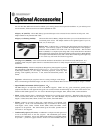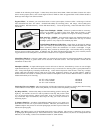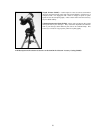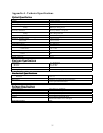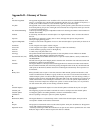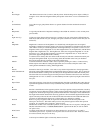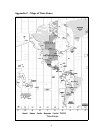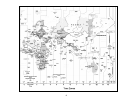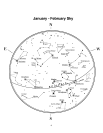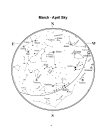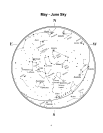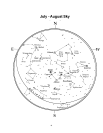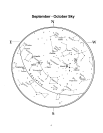40
Resolution The minimum detectable angle an optical system can detect. Because of diffraction, there is a limit
to the minimum angle, resolution. The larger the aperture, the better the resolution.
Right Ascension: (RA) The angular distance of a celestial object measured in hours, minutes, and seconds along the
Celestial Equator eastward from the Vernal Equinox.
S -
Sidereal Rate This is the angular speed at which the Earth is rotating. Telescope tracking motors drive the
telescope at this rate. The rate is 15 arc seconds per second or 15 degrees per hour.
T -
Terminator The boundary line between the light and dark portion of the moon or a planet.
U -
Universe The totality of astronomical things, events, relations and energies capable of being described
objectively.
V -
Variable Star A star whose brightness varies over time due to either inherent properties of the star or something
eclipsing or obscuring the brightness of the star.
W -
Waning Moon The period of the moon's cycle between full and new, when its illuminated portion is decreasing.
Waxing Moon The period of the moon's cycle between new and full, when its illuminated portion is increasing.
Z -
Zenith The point on the Celestial Sphere directly above the observer.
Zodiac The zodiac is the portion of the Celestial Sphere that lies within 8 degrees on either side of the
Ecliptic. The apparent paths of the Sun, the Moon, and the planets, with the exception of some
portions of the path of Pluto, lie within this band. Twelve divisions, or signs, each 30 degrees in
width, comprise the zodiac. These signs coincided with the zodiacal constellations about 2,000 years
ago. Because of the Precession of the Earth's axis, the Vernal Equinox has moved westward by
about 30 degrees since that time; the signs have moved with it and thus no longer coincide with the
constellations.





